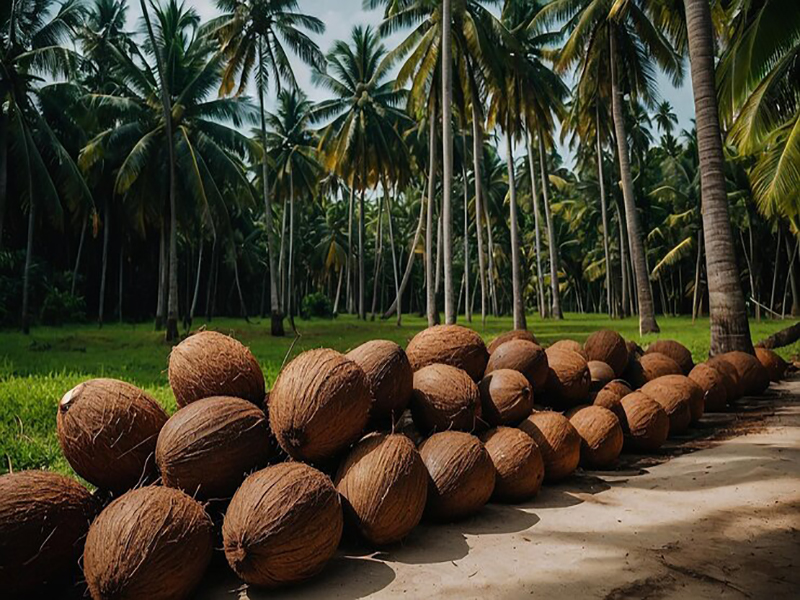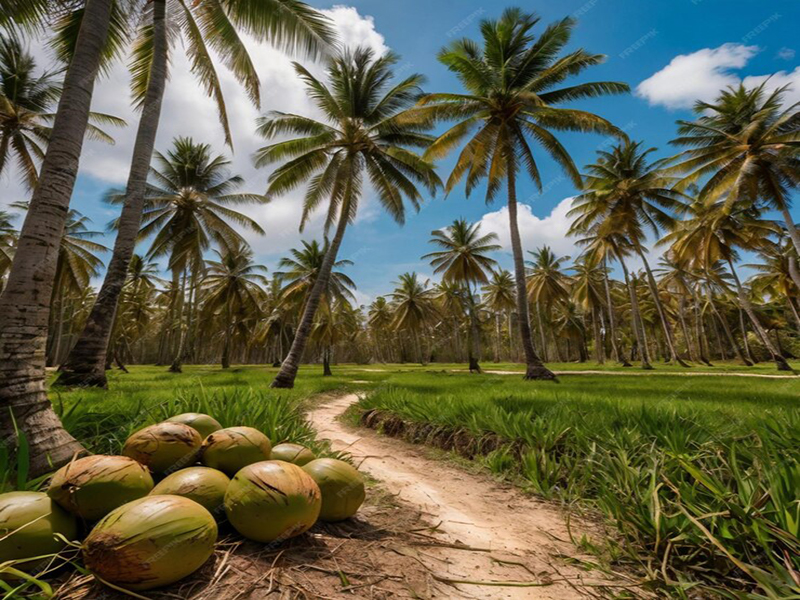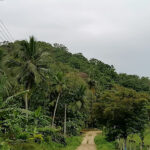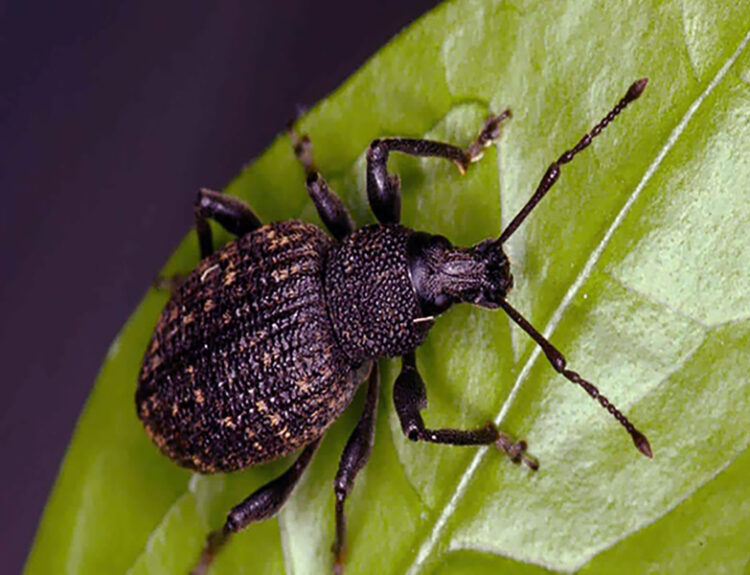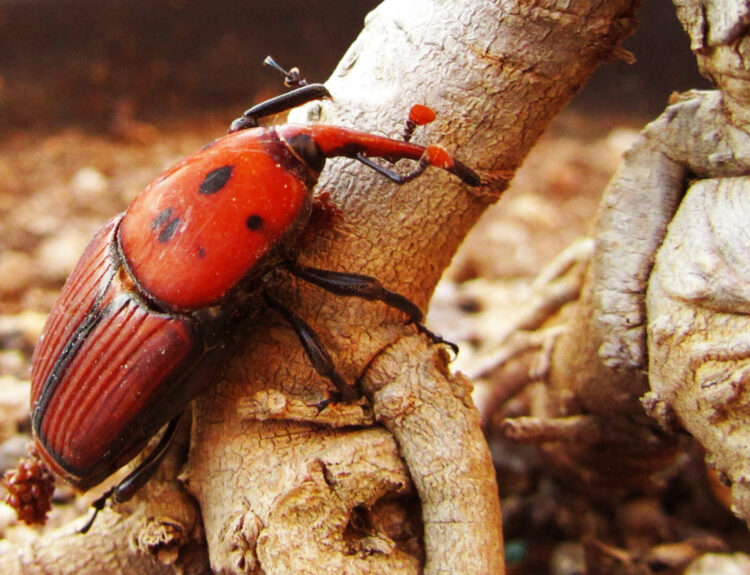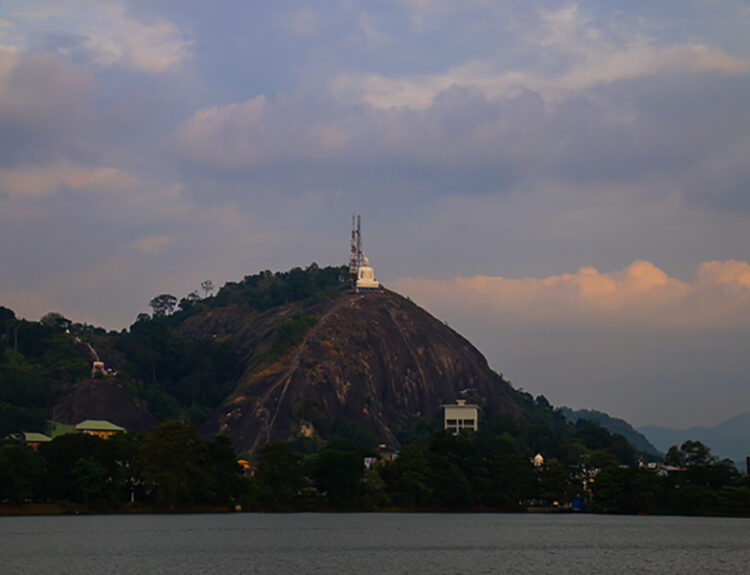Welcome to the ‘Sri Lanka’s Coconut Industry Series’, where we’ll crack open the fascinating world of Sri Lankan coconuts. Over the next twelve articles, we’ll delve deep into the history, cultivation, diverse uses, and future of this iconic crop. Prepare to be surprised by the coconut’s cultural significance, economic power, and its potential to shape a sustainable future.
This versatile fruit, scientifically known as Cocos nucifera, is the sole living member of the genus Cocos within the palm family Arecaceae. Despite its widespread namesake, the coconut is not a nut. It’s a drupe, a fruit with a fleshy exterior and a single seed enclosed in a hard, stony pit. The white meat we eat is the soft endosperm, and the characteristic brown shell protects the seed (kernel) inside. Coconut water, a clear liquid that’s not really juice but cellular fluid from the growing seed, is a refreshing surprise that you can find in young coconuts.
With Puttalam, Kurunegala, and Gampaha making up the Coconut Triangle in Sri Lanka, this area is a lush garden covered in waving coconut palms. The large root systems of these famous trees not only bring in a lot of money through exports and high yields of coconuts, but they also protect cultural history, encourage biodiversity, and keep the soil healthy.
Coconut palms, tropical giants, are resourceful from root to frond. The tree’s unseen roots give nutrients and are used medicinally in some civilizations. The trunk supports homes and makes tropical-style furnishings. But the leaves create weatherproof roofings, making them loving spaces for rural communities. The midribs or elkies become natural brooms and sturdy fences and walls for basic homes. Trained hands make exquisite baskets, caps, and bags from these leaves, giving them cultural importance. Finally, the crown jewel fruits provide exquisite flesh for many meals, creamy coconut milk for rich flavors, and even the hard shell for bowls and utensils. Fresh coconut water is a wonderful surprise in young coconuts. From the unseen to the iconic, the coconut palm shows nature’s inventiveness, providing practical purposes for decades.
Since its possible therapeutic uses, coconut oil, made from the mature kernel of the coconut palm (Cocos nucifera L.), has received attention. The main triglyceride in coconut oil, lauric acid, is antibacterial. Lauric acid combats Staphylococcus aureus and herpes simplex virus in vitro. Coconut oil has also been demonstrated to increase HDL cholesterol and weight management in clinical trials. Larger investigations are needed to corroborate these conclusions. Coconut oil contains saturated fat, so use it sparingly. Consulting a doctor before using coconut oil in treatment is recommended.
Porcupines can inflict localized damage to Sri Lanka’s coconut industry, but they don’t pose a significant hazard in and of themselves. Coconuts that are still maturing may become useless due to the sharp quills on them. Considering the bigger issues the business faces—like pervasive pests, erratic weather patterns, and pressures from the economy this threat is probably insignificant.
The coconut sector accounts for 12% of Sri Lanka’s agricultural GDP and is a tropical gem. As a global leader in desiccated coconut and brown fiber exports, the industry ranks fourth with $28 billion in potential income. An additional 135,000 Sri Lankans work indirectly for this economic behemoth, which employs over 700,000. However, obstacles remain. To optimize productivity and efficiency, nearly 400,000 hectares of coconut estates must be modernized. Sustainability is essential for the industry’s long-term success. Sri Lanka is focusing on value-added products like virgin coconut oil and boosting its home market, where two-thirds of the harvest is consumed, despite these challenges. With this strategic move and a commitment to exports and local consumption, Sri Lanka’s coconuts will remain tasty and economically crucial for centuries.
Sources : https://cri.gov.lk/en/about-us/
Sri Lanka has long loved coconuts. Originally brought by trade winds, these delectable nuts became a Sri Lankan delicacy and symbol. Large coconut farms grew in Sri Lanka during colonial times, making it a top coconut oil and dried coconut vendor. Sri Lanka became famous for coconuts due to the Coconut Triangle’s excellent soil.
Sri Lanka’s coconut industry has great potential, but it faces challenges. Luckily, Sri Lanka’s spirit is as strong as the palm! Prepare to be surprised by our ‘Sri Lanka’s Coconut Industry Series’ twelve articles! We’ll explore this iconic crop’s rich history, intricate cultivation methods, surprising versatility, and promising future for sustainability.
